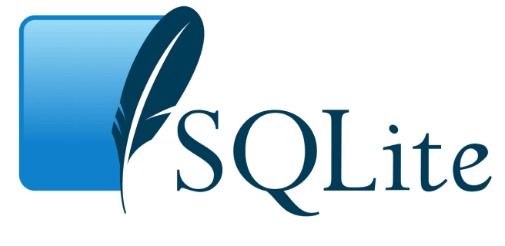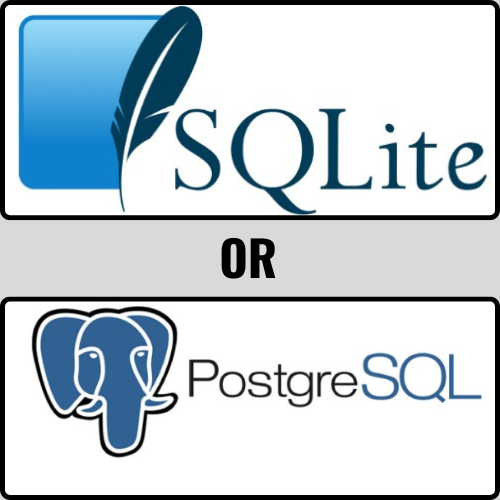course
Effective data management is crucial in today's data-driven world, and choosing the right Relational Database Management System (RDBMS) can significantly impact an organization's ability to handle and process data efficiently.
SQLite and PostgreSQL are two prominent open-source RDBMS options, each offering distinct approaches to data processing and management. Understanding their unique features, similarities, and differences can help organizations make informed decisions to best meet their specific database management requirements.

Why Are Databases Important?
Before we answer this question, let us first understand RDBMs and their different flavors.
A Relational Database Management System (RDBMS) is a structured way of organizing information. It stores data in tables, rows, and columns. Let us delve into how they work:
- Tables: An RDBMS organizes data into tables. Each table represents a specific type of information. For example, you might have a table for customers, products, or orders.
- Rows and columns: Within each table, data is stored in rows (also known as records) and columns (also known as fields). Each row corresponds to a specific entry, and each column represents an attribute of that entry. For instance, in a customer table, each row could represent a different customer, and the columns might include attributes like name, address, and email.
- Relationships: The power of RDBMS lies in its ability to establish relationships between tables. By joining tables based on common keys (unique identifiers), you can connect related data. For example, if you have a customer table and an order table, you can link them using a customer ID. This allows you to understand how customers are related to their orders.
- SQL Queries: Users interact with RDBMS by writing SQL (Structured Query Language) queries. These queries allow you to retrieve, update, or manipulate data. For instance, you can use SQL to find all orders placed by a specific customer or calculate the total revenue for a given period.
Relational databases are important because they allow us to organize, manage, and analyze data effectively. They serve as the backbone for business intelligence, reporting, and decision-making processes in businesses across various industries. In this age of data, the survival of a business can depend totally on their RDBMS.
In terms of utilizing different RDBMS, the goal could be the same, but the approaches can be different. There are a variety of SQL flavors to choose from to achieve this. The choice of flavor the user selects will depend on a host of factors, as we’ll explore shortly.
What is SQLite?

SQLite is like a digital filing cabinet that helps software keep track of their data. It’s free to use and doesn’t need a separate system or person to manage it. Unlike other filing systems, SQLite doesn’t need a central server to work. Instead, it works directly within the software that’s using it. This makes SQLite easy to set up and use for data enthusiasts, with no extra steps needed other than being able to access the file where the data is stored.
In short, it is an open-source, serverless, and self-contained RDBMS that operates from within the software accessing its data. Two examples of software that use SQLite are:
- Mozilla Firefox: The popular web browser uses SQLite to store bookmarks, browsing history, and other user data.
- Apple iOS: Many applications on Apple devices, including the Mail app and the Safari browser, use SQLite for data storage. It’s also used in the iOS operating system itself for system services.
These applications benefit from SQLite’s serverless and self-contained architecture, which allows them to operate without the need for a separate database management system or administrator.
What is PostgreSQL?

PostgreSQL, often called Postgres, is like a supercharged digital filing cabinet that’s free to use, built to be flexible, and adhere to industry standards. It can handle more complex data types and allow multiple people to access the data at the same time without conflict.
Postgres is known for being reliable and needing little maintenance. It also supports many coding languages in data science, has advanced security features, and can even handle location data.
It is a powerful open-source Object-Relational Database Management System (ORDBMS) built with a focus on extensibility, standards compliance, and concurrency support.
Developed to add new functionalities and capabilities, it was the first DBMS to implement multi-version concurrency control (MVCC). PostgreSQL provides high stability with low maintenance efforts and supports geo-tagging.
SQLite vs PostgreSQL: Similarities
While both flavors of RDBMS have their clear differences, they also share a lot of similarities, which are highlighted below:
Open-source
Both SQLite and PostgreSQL are open-source, meaning they are free to use and their source code is publicly available. This allows developers around the world to contribute to their improvement and adapt them to their needs.
Relational database management systems
Both SQLite and PostgreSQL are RDBMS. They use tables to store data and SQL for accessing and manipulating that data.
ACID compliance
Both databases are ACID-compliant, ensuring that transactions are (A)tomic, (C)onsistent, (I)solated, and (D)urable. This means they’re reliable and maintain the integrity of your data even in the event of errors or system failures.
Support for multiple languages
Both SQLite and PostgreSQL support a wide range of programming languages. This means you can interact with these databases using the language you’re most comfortable with or that best suits your project.
Standards compliance
Both SQLite and PostgreSQL strive to adhere to the SQL standards. This makes it easier for data scientists and developers alike to switch between them, as the SQL syntax and features they support are largely the same.
Here is a table showing similarities between some syntaxes while using SQLite and PostgreSQL:
|
Command |
SQLite |
PostgreSQL |
Similarity |
|---|---|---|---|
|
Creating a table |
CREATE TABLE Employees (ID INTEGER PRIMARY KEY, Name TEXT NOT NULL, Age INTEGER NOT NULL); |
CREATE TABLE Employees (ID SERIAL PRIMARY KEY, Name TEXT NOT NULL, Age INTEGER NOT NULL); |
PostgreSQL uses the SERIAL keyword for auto-incrementing primary keys, while SQLite uses INTEGER PRIMARY KEY |
|
Inserting data into a table |
INSERT INTO Employees (Name, Age) VALUES (‘John Doe’, 30); |
INSERT INTO Employees (Name, Age) VALUES (‘John Doe’, 30); |
Same syntax |
|
Selecting data from a table |
SELECT * FROM Employees WHERE Age > 25; |
SELECT * FROM Employees WHERE Age > 25; |
Same syntax |
You can run these code examples in DataCamp's DataLab.
SQLite vs PostgreSQL: Differences
Despite these similarities, however, SQLite and PostgreSQL have many clear differences. Understanding these differences can help us determine which one would be best suited to a particular project.
The table below shows the differences in syntax between SQLite and PostgreSQL when performing certain tasks.
|
Command |
SQLite |
PostgreSQL |
Difference |
|---|---|---|---|
|
Inserting Data with Date |
INSERT INTO Employees (Name, Age, Salary, JoiningDate) VALUES ('John Doe', 30, 50000.00, date('now')); |
INSERT INTO Employees (Name, Age, Salary, JoiningDate) VALUES ('John Doe', 30, 50000.00, CURRENT_DATE); |
SQLite uses the date('now') function to get the current date, while PostgreSQL uses the CURRENT_DATE keyword |
|
Date and Time Functions |
SELECT datetime('now'); |
SELECT NOW(); |
SQLite uses the datetime function with 'now' as an argument to get the current date and time, while PostgreSQL uses the NOW() function |
|
Creating a Table |
CREATE TABLE Employees (ID INTEGER PRIMARY KEY, Name TEXT NOT NULL, Age INTEGER NOT NULL, Salary REAL); |
CREATE TABLE Employees (ID SERIAL PRIMARY KEY, Name VARCHAR(100) NOT NULL, Age INTEGER NOT NULL, Salary NUMERIC(10, 2)); |
PostgreSQL uses SERIAL PRIMARY KEY, whereas SQLite uses INTEGER PRIMARY KEY. Also, PostgreSQL uses VARCHAR and NUMERIC, while SQLite uses TEXT and REAL |
As we can see, there are clear differences in how we work with either of the two, whether as a beginner or as an expert.
Head over to DataCamp’s DataLab and try the code out yourself. There are also other differences in the way SQLite and PostgreSQL function, especially if we compare their inner workings.
SQLite vs PostgreSQL: A Detailed Comparison
We will now go into a detailed comparison of how each of these RDBMS functions. We will compare them on various factors:
Data types
When it comes to data types, PostgreSQL offers a broader spectrum compared to SQLite. As seen on the official PostgreSQL documentation page, PostgreSQL includes support for data types like arrays, hstore, and json among others. On the other hand, SQLite’s official documentation page shows that its support for more robust data types is restricted.
Here are the supported data types for both:
SQLite
- NULL: Represents a NULL value.
- INTEGER: A signed integer, stored in 1, 2, 3, 4, 6, or 8 bytes depending on the value.
- REAL: A floating point value, stored as an 8-byte IEEE floating point number.
- TEXT: A text string, stored using the database encoding (UTF-8, UTF-16BE or UTF-16LE).
- BLOB: A blob of data, stored exactly as it was input.
PostgreSQL
- Boolean: Logical Boolean (true/false).
- Character Types: Includes char, varchar, and text.
- Numeric Types: Includes integer and floating-point number.
- Temporal Types: Includes date, time, timestamp, and interval.
- UUID: For storing Universally Unique Identifiers.
- Array: For storing array strings, numbers, etc.
- JSON: Stores JSON data.
- Special types: Includes network address, geometric data, and more.
Winner: PostgreSQL
Build
In terms of architecture, SQLite is a type of database management system that doesn’t require a server. It can be integrated directly into an application.
Conversely, PostgreSQL is a database management system that operates on a client-server model, necessitating a separate server process to be active on the machine to manage database requests.
Winner: PostgreSQL
ACID compliance
When it comes to ACID compliance, both SQLite and PostgreSQL meet the criteria, ensuring that data remains consistent and integral throughout transactions. However, PostgreSQL stands out by offering support for more intricate transactions and presenting a stronger model for concurrency.
Winner: PostgreSQL
Licenses
In terms of licensing, SQLite resides in the public domain, meaning it can be utilized without any limitations related to licensing. On the other hand, PostgreSQL operates under the PostgreSQL License, a permissive open-source license.
Winner: SQLite
Administration
SQLite databases are single files, making administration straightforward with no separate server process. You directly interact with the SQLite database file using basic command-line tools. Tasks like altering tables, adding indices, and data import/export can be done using SQL commands. Backups are as simple as copying the database file. SQLite offers minimal, zero-configuration administration suitable for embedded databases.
PostgreSQL offers advanced administrative capabilities for enterprise database servers. This includes sophisticated command-line tools (like pgAdmin, psql, pg_dump, pg_restore, etc.), graphical admin tools, monitoring via admin views and statistics collectors, automated vacuuming, logging, backups, fine-grained access control, streaming replication for high-availability, load balancing, failover management for clusters, and extensive logging for auditing and debugging.
Winner: PostgreSQL
Performance
SQLite performs well for local workloads, with its performance tied to disk I/O speeds due to its disk-based storage. Its serverless structure curbs excessive resource use. Read operations are typically quick with the right indexes, but write operations can be slower due to file locking and sequential operations.
On the other hand, PostgreSQL excels in performance due to its advanced indexing, query optimization, parallel processing, caching, and scalability. It’s tailored for server-based workloads and uses buffering to reduce disk I/O. Its architecture allows for parallel processing on multiple CPU cores and avoids file-locking issues during concurrent writes.
PostgreSQL exhibits a significantly greater capacity for performance compared to SQLite, particularly for server and web-based workloads that involve larger data sets, intricate queries, and high levels of concurrency.
Winner: PostgreSQL
Compliance with SQL
In terms of SQL compliance, both SQLite and PostgreSQL adhere to SQL standards. However, PostgreSQL has a more extensive support for SQL commands and functionalities. This makes PostgreSQL a more fitting choice for handling intricate queries and managing larger volumes of data.
Winner: PostgreSQL
Features
SQLite offers a respectable range of SQL capabilities, but it doesn’t include some of the more advanced SQL features such as partial indexes, check constraints, and triggers. It doesn’t support partial and expression indexes.
SQLite does support primary keys, foreign keys, joins, views, and transactions, which are enough for many applications. However, its feature set is less complex compared to full-fledged enterprise RDBMS like PostgreSQL.
On the other hand, PostgreSQL provides a comprehensive set of features which include:
- Support for complex SQL, including triggers, stored procedures, and recursive queries.
- Advanced index types such as partial, expression, clustered, and covering indexes.
- Table inheritance, table partitioning, and materialized views.
- Foreign data wrappers for accessing external data sources.
- Replication, clustering, connection pooling, and other enterprise features.
Winner: PostgreSQL
Scalability
SQLite is best for single-machine, low-traffic applications with small databases (up to 100GB). It has limited scalability due to its reliance on a single disk file and serialized write locking.
Conversely, PostgreSQL is designed for large-scale, high-traffic applications. It scales well in terms of storage, complexity, concurrency, read/write performance, and can handle hundreds to thousands of concurrent users. It supports horizontal scalability across multiple servers using features like replication, clustering, partitioning, and sharding. Database sizes can reach hundreds of TB to PB scale.
Winner: PostgreSQL
The table below shows how both of these flavors match up in the categories we have examined:
|
CATEGORY |
WINNER |
|
Data types |
PostgreSQL |
|
Build |
PostgreSQL |
|
ACID Compliance |
PostgreSQL |
|
Licenses |
SQLite |
|
Administration |
PostgreSQL |
|
Performance |
PostgreSQL |
|
Compliance with SQL |
PostgreSQL |
|
Features |
PostgreSQL |
|
Scalability |
PostgreSQL |
Overall winner: PostgreSQL
As we can see in the table, PostgreSQL wins in the categories: Data Types, Build, ACID Compliance, Administration, Performance, Compliance with SQL, Features and Scalability. SQLite only wins in the “Licenses” category. The overall winner is therefore PostgreSQL. However, that doesn’t mean that there aren’t use cases for both.
SQLite vs PostgreSQL: When to use SQLite or PostgreSQL
Are there any times when you should prefer one of the two over the other?

Here is a list of when one might be preferable over the other:
Why choose SQLite
- Analysis of local data: For straightforward analysis or prototyping involving local data, SQLite is an excellent option.
- In-app database: It’s perfect for scenarios where an in-app database is needed, such as in mobile applications or intelligent devices.
- No configuration needed: SQLite’s minimal setup and administration requirements make it user-friendly for quick data investigations.
- Easy to share: The self-contained nature of SQLite databases in single files makes them easily portable and shareable during data science projects.
Why choose PostgreSQL
- Handling large data: PostgreSQL is built to manage large data volumes, making it ideal for data science.
- Support for complex queries: PostgreSQL’s ability to handle complex SQL queries is crucial for advanced data science tasks.
- Scalability: If your data science project requires scaling beyond the limits of a single machine, PostgreSQL is a suitable choice.
- Advanced capabilities: PostgreSQL’s advanced features like sophisticated transaction support, advanced index types, and special data types are beneficial for intricate data science tasks
Final Thoughts
SQLite and PostgreSQL have their differences and similarities. For data science, both flavors have very similar syntax, with slight differences. For applications, use SQLite for lightweight, portable applications, and PostgreSQL for robust, feature-rich systems with high scalability requirements. Choose based on your specific project needs.
If you’re looking to enhance your SQL skills, consider enrolling in a DataCamp course such as Introduction to SQL or Learn SQL. Once you’ve mastered the basics, take the next step by pursuing certification. The SQL Associate Certification is an excellent goal to strive for. Intermediate learners can also explore an Intermediate SQL course, which delves into more advanced SQL concepts.

Top DataCamp Courses
course
Creating PostgreSQL Databases
course
Functions for Manipulating Data in PostgreSQL
blog
PostgreSQL vs. MySQL: Choosing the Right Database for Your Project
Jake Roach
8 min
blog
SQL Server, PostgreSQL, MySQL... what's the difference? Where do I start?
blog
SQL vs NoSQL Databases: Key Differences and Practical Insights
Kevin Babitz
15 min
tutorial
Beginner's Guide to PostgreSQL
tutorial
Beginners Guide to SQLite
tutorial